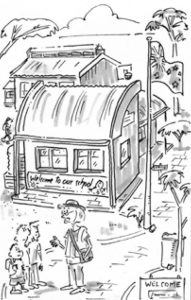 5 July 2016
5 July 2016
Students with disabilities are not a homogeneous group. They each have abilities, dreams and circumstances and often a unique history of loss and trauma. They have to negotiate and seek out many of the things that other children take for granted. They work by different rules, they are the subject of written plans about them and their privacy is less preserved than others. They may struggle to see brothers and sisters, to keep personal things safe and frequently have to attend new schools.
They also are achievers, most of whom overcome disadvantage to be strong and sure.
The benefits of going to school go well beyond learning and grades. In conversations with the Guardian’s Office students say they like school because they can mix with friends and learn new things and that there is a welcome sense of stability in the seeing the same places and faces. They are also able to do the much the same things as everyone else their age.
School can contribute positively to their social and emotional wellbeing. Young Aboriginal and Torres Strait Islander people also often stress the importance of culture and identity and its relevance to education.
In reality, we must also recognise the practical challenge. An above average proportion of children in care of pre-school or school age compared with their age peers are “students with disabilities, additional learning needs and/or challenging behaviours”.
In September 2015 the Guardian made a submission to the Legislative Council Select Committee Inquiry into Access to the Education System for Students with Disabilities. In March this year, Guardian Amanda Shaw gave evidence before the Select Committee.
The focus of the Guardian’s submission and comments was on the state school system. Systemic data is not available about the work of non-government schools with children in care.The Guardian proposed that the gap in educational achievement and outcomes between children with disabilities in care and their age peers could be addressed by:
- early specialist intervention for children with speech and language disabilities
- strengthening capacity to build culturally supportive connections between Aboriginal students in care, local Aboriginal communities and schools
- addressing the problem of lowered expectations of achievement for students with disabilities and/or in state care by providing information and challenging pessimistic views of educators, social workers and carers about capacity and capability
- enhancing participation and engagement of students
in care by, among other things, adopting alternative disciplinary measures in place of suspension and exclusion - monitoring and reporting on part-time attendance of students, with the aim of gradually increasing the hours of school attendance and participation
- providing information and skills development for school staff in understanding and responding to children with learning disabilities resulting from early childhood trauma
- agreement on a definition for learning disabilities that applies consistently across programs and across non-government and government schools
- evaluation of the Flexible Learning Options (FLO) program to understand better its engagement with, and outcomes for, students in care who have, or are likely to, disengage with school
- reviewing the impact of Individual Education Plans, expanding their use to non-government schools and enhancing the quality of their implementation
- analysing the use of School Services Officers and allied health professionals in schools to better support individual students with learning difficulties
- improving knowledge of year 12 completion rates and post-school activity so that we understand better the pathways from school.
You can access the 2015 GCYP submission to the Select Committee on the Guardian’s website.
.This item originally appeared in the May 2016 edition of the Guardian’s Newsletter.
